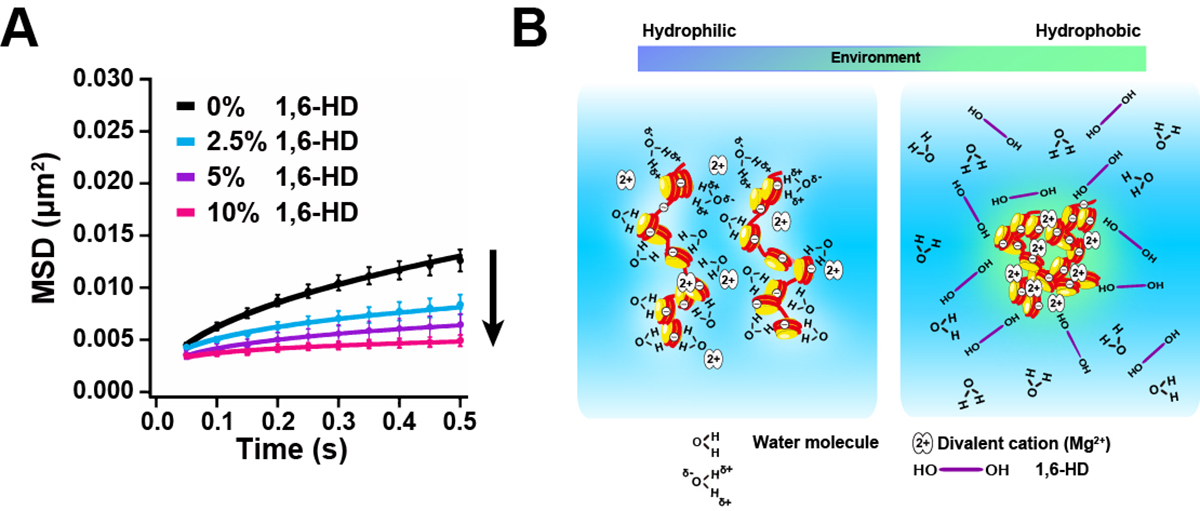Hexanediol immobilizes chromatin
1,6-hexanediol rapidly immobilizes and condenses chromatin in living human cells
Yuji Itoh, Shiori Iida, Sachiko Tamura, Ryosuke Nagashima, Kentaro Shiraki, Tatsuhiko Goto, Kayo Hibino, Satoru Ide and Kazuhiro Maeshima
Life Science Alliance 4, e202001005 (2021) DOI:10.26508/lsa.202001005
Liquid droplets formed inside the cell by liquid-liquid phase separation (LLPS) maintain membrane-less condensates/bodies (or compartments). These droplets are important for concentrating certain molecules and facilitating spatiotemporal regulation of cellular functions. 1,6-hexanediol (1,6-HD), an aliphatic alcohol, inhibits weak hydrophobic protein-protein/protein-RNA interactions required for the droplet formation (droplet melting activity) and is used here to elucidate the formation process of cytoplasmic/nuclear condensates/bodies. However, the effect of 1,6-HD on chromatin in living cells remains unclear. We found that 1,6-HD drastically suppresses chromatin motion and hyper-condenses chromatin in human cells by using live cell single-nucleosome imaging, which detects changes in the state of chromatin. These effects were enhanced in a dose-dependent manner. Chromatin was ‘frozen’ by 5%, or higher, concentrations of 1,6-HD. 1,6-HD greatly facilitated cation-dependent chromatin condensation in vitro. This 1,6-HD action is distinct from its melting activity of liquid droplets. Alcohols, such as 1,6-HD, appear to remove water molecules around chromatin and locally condense chromatin. Therefore, liquid droplet results obtained using 1,6-HD should be carefully interpreted or reconsidered when these droplets are associated with chromatin.
This work was supported by JSPS and MEXT KAKENHI grants (19K23735, 20J00572, 18K06187, 19H05273 and 20H05936), a Japan Science and Technology Agency CREST grant (JPMJCR15G2), Takeda Science Foundation, Uehara Memorial Foundation, NIG Postdoctoral Fellowship and JSPS Postdoctoral Fellowship (PD).

Figure: Chromatin immobilization by 1,6-HD and scheme for chromatin condensation.
(A) Mean square displacement plots (±SD among cells) of nucleosome motion in HeLa cells treated with 2.5% (light blue), 5% (purple), or 10% (pink) of 1,6-HD for 5–30 min. (B)(Left) Chromatin is associated with many water molecules with electrostatic interactions. (Right) Alcohols such as 1,6-HD can remove water molecules around chromatin, and its environment becomes more hydrophobic. This environmental change facilitates the formation of chromatin condensates. Note, this scheme is highly simplified and the molecules shown are not to scale. How 1,6-HD acts on chromatin at molecular level remains unclear.















